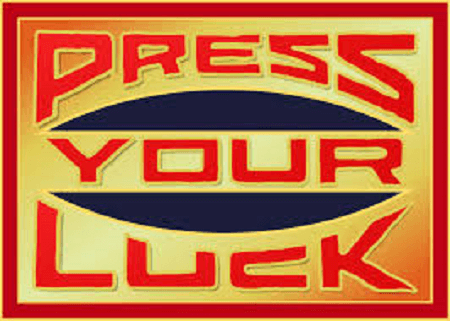Higher or Lower Play Latest Version
Push Your Luck, Continue or halt; collect your profits or place a wager. The concept is not new. Pass the Pigs is merely a contemporary variation of the many gambling games that heavily utilize it, including Black Jack and other classic dice games. Many TV games also employ this concept, giving the winner the choice to either keep his winnings or risk losing everything he has already earned by answering one more question. As in Luigi Comencini’s Scopone Scientifico, you will always lose if you don’t give up. Because it creates a lot of tension and some agony when more dice are rolled or more cards are drawn, this strategy is also particularly effective in board and card games.

Probably the most well-known “double or quits” game is Sid Sackson’s Can’t Stop, a creative dice game that depicts mountaineers who are so eager to reach the summit that they typically fall in the most recent edition. When everyone is on the same ship and they don’t know if or when it will sink, it becomes much more difficult. Is it time to depart? That is what occurs in both Aaron Weissblum’s Cloud Nine and the game Diamant, which I co-designed with Alan R. Moon.
Overview of Push Your Luck Cool Math:
Try your luck. Games are the tabletop equivalent of marmite. They frequently use little to no strategy, depending instead on risk assessment and a good dose of good fortune. You can figure out that you have a slim chance of getting shot in the head, and then—whoa! No head! I am aware. I’ve been there. Often.
I guess I lose my brain and then just play another game, which is the other marmite factor. With no repercussions, it is high-speed risk taking. I pretend to be confident and optimistic in these games, which is regrettably absent from other aspects of my life. This generally leads to my abrupt death and may support the idea that anything that can go wrong in real life will go wrong.
Gameplay for Push Your Luck Cool Math:
Have a go. Games are the marmite of the tabletop. They usually rely on risk assessment and a healthy dose of good fortune rather than employing much or any strategy. You can determine that your chances of being shot in the head are quite low, and then—whoa! Not a head! I know. I’ve been there. Frequently.
The other marmite issue is that I play another game after losing my mind. It’s high-speed risk taking with no consequences. In these games, I put up a front of assurance and optimism that is unfortunately lacking in other areas of my life. This usually results in my untimely death and could bolster the notion that anything can go wrong in real life.
Screenshots:

Key Features of Test Your Luck:
- You can add your current points to your score and skip the remainder of the game by pressing the BANK button if you’d rather be safe. After all eight players either BANK or BUST, a new round starts.
- Additionally, each game has a FREE SPIN that lets you stay in the game for one spin without having to worry about making a mistaken guess. Make good use of it!
- When one player accumulates more than 100 points, the game is over. The person with the highest score wins after the current round is over and all players have either BANK or BUST.
- Depending on where you finish at the conclusion of each game, you will either gain or lose points. To move up from bronze to diamond, keep winning.
System Requirements of Push Your Luck:
- System software: Windows XP, Vista, 7, 8, 8.1, and 10
- 512 MB of RAM
- 50 MB hard drive
- Processor: Dual-core Intel processor or more
Conclusion of Push Your Luck:
There are numerous ways that disasters might occur. You must now more than ever balance the possible advantages and losses. You can be caught off guard if you roll particular numbers or hit particular totals. Can you get away from the impending disaster? As long as you keep your options open, you can keep throwing in other games. Recognize when to quit and protect your outcomes. You’re out if you get avaricious and your luck runs out. You must also be fortunate and make the correct choices.
